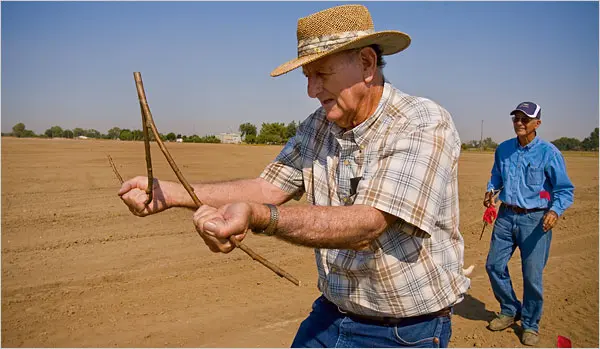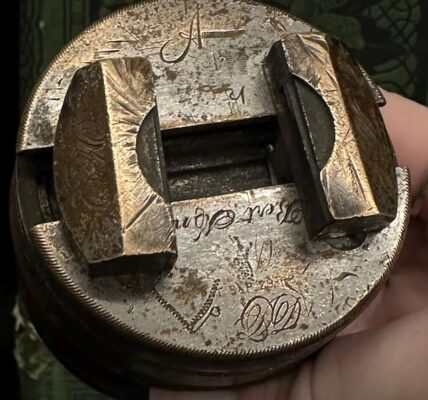Nearly No One Recognizes This Antique Tool. Are You One Of The Few That Actually Know What It Is?-s1
Have you ever stumbled upon an unusual object and wondered what it could be? Recently, we came across a curious image of a peculiar tool that left us scratching our heads. It looked like a simple tree branch, yet it holds a fascinating history that dates back to the 1500s!
The Mystery of Water Dowsing

So, what is this enigmatic tool? It’s called a water dowsing rod, and it’s also known by other names like a diviner, doodlebug, well witch, or water-finder. The concept behind dowsing is intriguing yet steeped in folklore. Dowsing is the practice of locating underground water sources, and while it may seem more like an old wives’ tale today, it was once a common method for those seeking water.
How Does Water Dowsing Work?
The process is surprisingly simple. A dowser holds a Y-shaped branch, with one end in each hand and palms facing up. The stem of the “Y” is angled towards the ground at about 45 degrees. As the dowser strolls around, they look for the branch to pivot downwards, supposedly indicating the presence of water beneath the earth.
A Historical Perspective on Dowsing
You might be wondering how this practice came to be. It all started in the 1500s with metal rods being used to locate minerals underground. Over time, the technique evolved, and people began using dowsing rods specifically to find water, especially in rural areas where access to clean water was vital.
Imagine being a farmer in the 16th century, trying to find water for your crops. Drilling in the wrong spot could be a costly mistake! Dowsing provided a more economical and efficient way to search for water, saving both time and money.
The Science Behind Dowsing: Fact or Fiction?
Now, here’s where it gets interesting. Modern technology has revealed that water is often found beneath the surface almost everywhere. So, does that mean dowsing is just a myth? Not entirely. While scientific studies have largely debunked the effectiveness of dowsing, some water drilling companies still use it as a preliminary step before actual drilling. Why? It adds an extra layer of assurance that they’re targeting a spot likely to have water.
Is Dowsing Just Folklore?
While many people view water dowsing as superstition, it’s important to recognize that the practice has historical significance. It reflects humanity’s long-standing quest for water, a fundamental resource for survival. Though the scientific community may not fully endorse it, the stories and traditions surrounding dowsing contribute to its allure.
The Cultural Impact of Dowsing

Dowsing has left its mark on various cultures. In some societies, dowsers were revered as healers or mystics, using their skills to not only find water but also to help others in their communities. The practice often involved rituals that added a spiritual dimension, making it more than just a practical tool.
Conclusion: A Tool of the Past with a Legacy
So, the next time you come across a Y-shaped branch, you’ll know it’s not just an ordinary piece of wood. It’s a reminder of an ancient practice that highlights humanity’s ingenuity in the face of necessity. Whether you believe in its effectiveness or see it as folklore, water dowsing represents a fascinating intersection of history, culture, and resourcefulness.
Now, if you knew what this tool was, congratulations! If not, you’re now part of a select group that understands the legacy of this antique instrument. Why not share this newfound knowledge with friends and see if they can guess what it is? You might just stump them!



